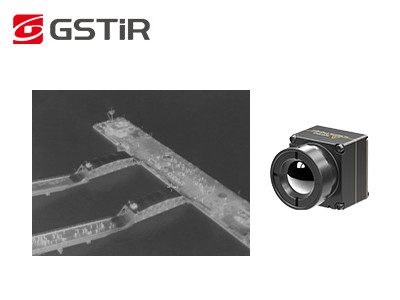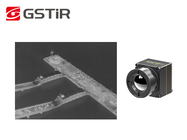-
Thermal Camera Core
-
Thermal Security Camera
-
Drone Thermal Camera
-
EO IR Systems
-
Thermal Imaging Binoculars
-
Infrared Thermal Camera Module
-
High Resolution Thermal Camera Module
-
Cooled Infrared Detectors
-
Optical Gas Imaging
-
Thermal Camera For Fever Detection
-
Cooled Camera Modules
-
Vehicle Mounted Thermal Camera
-
Integrated Dewar Cooler Assembly
-
Uncooled Infrared Detectors
RAW YUV BT656 Digital Video Uncooled Infrared Camera Core 640x512 12um

Contact me for free samples and coupons.
Whatsapp:0086 18588475571
Wechat: 0086 18588475571
Skype: sales10@aixton.com
If you have any concern, we provide 24-hour online help.
x| Resolution | 640x512 | Power Consumption | 0.7W |
|---|---|---|---|
| Spectral Range | 8~14μm | Pixel Pitch | 12μm |
| Typical NETD | ≤40mK | Frame Rate | 30Hz |
| Highlight | Digital Video Uncooled Infrared Camera,640x512 Uncooled Infrared Camera,Uncooled Infrared Camera Core 12um |
||
Tiny Size Uncooled Infrared Camera Core 640x512 12um for UAV Payloads
As a leading manufacturer of cooled uncooled infrared detectors & thermal modules, Global Technology developes a tiny size and lightweight infrared thermal imaging core iTL612R Pro, which is the compact version of infrared camera core iTL612R.
Fully oriented for SWaP-C (size-weight-and- power-cost), the size and weight of iTL612R Pro infrared camera core has already been at the forefront in the industry.It is the best choice for customers who have restrict requirements on size and weight when integrating their own drones.
Providing 640×512/12μm self-developed wafer-level infrared detector, lens protection grade IP67, imaging and temperature measurement version, and various SDK solutions, the iTL612R Pro thermal module responds to space constraints with smaller size and lighter weight, achieves longer battery life with lower power consumption, overcomes integration problems in the consumer electronics field, and provides more solutions for compact and portable products.
It is specially developed for the field of Predictive Maintenance, Photovoltaic Inspection, Environmental Protection, Scientific Research, Aerial Photography, Police Investigation, Disaster Relief & Rescue, Forest Fire Prevention, Urban Safety etc.
Compact & Lightweight Design
• Size: 17mm×17mm×22mm (with 9.1mm lens)
• Weight: 13g (with 9.1mm lens)
• Power consumption as low as 0.7W
Clear Image & Accurate Radiometry
• Brand new image process algorithm: NUC/3DNR/DNS/DRC/EE
• Support Windows/Linux/ARM SDK
• Support regional, point & isotherm temperature measurement
Various Interfaces for Easy Integration
• DVP/LVDS/USB2.0 interfaces, RAW/YUV image data output, serial port control
| Model | iTL612R Pro |
| IR Detector Performance | |
| Sensitive Material | Vanadium Oxide |
| Resolution | 640×512 |
| Pixel Size | 12μm |
| Spectral Range | 8~14μm |
| Typical NETD | ≤40mk |
| Image Processing | |
| Frame Rate | 30Hz |
| Start-up Time | 5s |
| Digital Video | RAW/YUV/BT656 |
| Image Algorithm | Non-uniformity Correction (NUC) 3D Noise Reduction (3DNR) De-noise (DNS) Dynamic Range Compression (DRC) Edge Enhancement (EE) |
| Image Display | Black Hot/White Hot/Pseudo Color |
| PC Software | |
| ICC Software | Module Control & Video Display |
| Electrical Specifications | |
| Standard External Interface | 30Pin_HRS: DF40C-30DP-0.4V(51), (HRS, Male) |
| USB Expansion Board | Type-C |
| Communication Interface | RS232-TTL/USB2.0 |
| Digital Video Interface | CMOS8/USB2.0 |
| Supply Voltage | 4.0-5.0V V VDC |
| Typical Power Consumption | 0.7W |
| Temperature Measurement | |
| Operating Temperature Range | -10°C~+50°C |
| Temperature Measurement Range | -20°C~+150°C, 0°C~550°C; Support Customization and Expansion |
| Temperature Measurement Accuracy | Greater of ±2°C or ±2% (@23℃±3℃) |
| Regional Temperature Measurement | Support Maximum, Minimum and Average Value of the Output Regional Temperature |
| SDK | Support Windows/Linux/ARM; Achieve Video Stream Analysis and Conversion from Gray to Temperature |
| Physical Characteristics | |
| Size (mm) | 17×17×22 (With 9.1mm Lens) |
| Weight | 13g (With 9.1mm Lens) |
| Environmental Adaptability | |
| Operating Temperature | -40°C~+70°C |
| Storage Temperature | -45°C~+85°C |
| Humidity | 5%~95%, Non-condensing |
| Vibration | 5.35grms, 3 Axis |
| Shock | Half-sine Wave, 40g/11ms, 3 Axis 6 Direction |
| Certificates | ROHS2.0/REACH |
| Optics | |
| Optional Lens | Fixed Focus Athermal: 9.1mm |
The iTL612R Pro thermal imaging module can be integrated into UAV payloads and wearable devices so that is widely used in fields of Predictive Maintenance, Photovoltaic Inspection, Environmental Protection, Scientific Research, Aerial Photography, Police Investigation, Relief & Rescue, Forest Fire Prevention, Urban Safety etc.![]()
![]()
![]()
1. What are the advantages of uncooled infrared detectors?
Uncooled infrared focal plane detector does not need cooled device, it can work at room temperature and has the advantages of fast start, low power consumption, small size, light weight, long life, low cost and so on.
2. What are the key considerations on an infrared detector / thermal module for your application?
---The detector resolution
---The pixel size
---The NETD
---The image quality
---The lens options
---The power consumption
---The size and weight
---The mechanical & electrical interface
---The budget
3. What is Infrared Detector Resolution
That is, the number of pixels of thermal imaging. The higher resolution means more observation and temperature measurement points, thus smaller target at longer distance can be observed and measured. Usually the resolution of infrared thermal imaging ranges from 256x192, 384x288, 640x512, 800x600, 1024x768, 1280x1024, etc. With higher resolution, the cost of detector will be more.
4. Field of View (FOV)
It refers to the two-dimensional field of view of the object space observed by the optical system of infrared thermal imager. Taking the horizontal FOV as an example, assuming that the detector array size is A×B, the pixel size is d, and the lens focal length is f, then the horizontal FOV angle θ=2×acrtan (A×d/2f).
After the detector array and pixel size are selected, the field of view only changes with the focal length of the optical system: with longer focal length, the field of view will be narrower; with shorter focal length, the field of view will be wider.










